Cairns N6A Sam Houston – Leather Fire Helmet
$1,699.00
Authentic Leather Fire Helmet: Tradition Forged in Flames
Rediscover the soul of firefighting with the Authentic Leather Fire Helmet – a handcrafted icon blending vintage grit and cutting-edge safety for structural warriors worldwide. Made from premium vegetable-tanned leather, this NFPA 1971:2018-certified powerhouse is the lightest compliant leather helmet on the market, weighing under 2 pounds to slash fatigue and boost endurance in blistering heat up to 500°F.
Engineered with an ergonomic low-profile shell, adjustable ratchet suspension for custom fits (sizes 6½–8), plush Nomex liners for sweat-wicking comfort, and integrated eye protection to shield against debris and sparks. Customize in classic black, tan, or bold hues with brass eagles and reflective trim for that unbeatable department pride.
Sleek, durable, and trusted by pros for its high-performance heritage – it’s more than a helmet; it’s your badge of bravery. Suit up with timeless excellence. Order yours today and lead through the fire!
Leather Fire Helmet: The Complete Guide to Traditional Head Protection
There’s something unmistakable about a leather fire helmet—it represents more than just protective equipment; it’s a symbol of firefighting heritage, pride, and unwavering courage. For generations, these iconic leather helmets have protected firefighters entering burning buildings, and today they maintain a special place in fire service culture. Whether you’re considering a leather fire helmet for sale, researching Cairns helmets, or simply curious about fire service traditions, understanding these remarkable pieces of equipment provides fascinating insight into firefighting history and modern safety.
In this comprehensive guide, we’ll explore everything you need to know about leather fire helmets—from their historical evolution and safety certifications to maintenance protocols and purchasing considerations. You’ll learn why traditional helmets like the Cairns N6A remain valued by firefighters who appreciate both heritage and protection.
About the Author: Our fire service equipment team includes former firefighters with over 20 years of experience and historical equipment specialists. We’ve personally used and evaluated various leather fire helmet models and maintain relationships with manufacturers and collectors to provide accurate, trustworthy information.
The Rich History of Leather Fire Helmets
From Humble Beginnings to Modern Protection
The story of the leather fire helmet dates back to the early 19th century when they replaced the felt hats and metal helmets previously worn by firefighters. The classic design we recognize today emerged from practical necessity—the extended rear brim (or “duckbill”) was designed to divert water away from the firefighter’s neck and coat, while the sturdy leather construction provided crucial protection from falling debris.
The evolution of Cairns helmets and other manufacturers represents a fascinating journey of innovation meeting tradition. Companies like Cairns & Brother, established in 1836, refined the design over generations, creating helmets that were both functional and symbolic of the fire service’s proud heritage.
Why Leather Remains Relevant
In an era of advanced composites and lightweight materials, leather fire helmets continue to be valued for several reasons:
-
Natural durability that improves with proper care
-
Traditional appearance that honors fire service heritage
-
Proven performance in extreme conditions
-
Character development as the helmet ages and tells its story
Understanding Modern Leather Fire Helmet Safety
NFPA Compliance: Essential Protection
Any leather fire helmet used in structural firefighting must meet NFPA 1971 standards. This certification ensures the helmet provides:
-
Impact resistance from falling debris
-
Penetration protection from sharp objects
-
Flame and heat resistance
-
Electrical insulation properties
-
Proper retention system effectiveness
Modern leather fire helmets achieve these standards through advanced manufacturing techniques while maintaining traditional aesthetics.
For current safety standards, refer to the National Fire Protection Association (NFPA) website.
The Balance of Tradition and Technology
What makes modern leather fire helmets remarkable is how they maintain traditional aesthetics while incorporating contemporary safety features:
-
Classic materials with modern treatment processes
-
Traditional appearance with updated safety certifications
-
Time-tested design with current manufacturing quality control
-
Heritage styling that meets rigorous safety standards
Types and Styles of Leather Fire Helmets
Traditional Designs and Their Characteristics
When exploring leather fire helmets for sale, you’ll encounter several distinctive styles:
The New Yorker Style:
-
Classic profile with distinctive lines
-
Popular in Northeastern fire departments
-
Balanced weight distribution
-
Timeless traditional appearance
The Sam Houston Style:
-
Distinctive Southern/Texas association
-
Unique profile characteristics
-
Popularized by Cairns N6A models
-
Strong regional collector interest
The Boston Style:
-
Extended rear brim for maximum water protection
-
High front crown
-
Excellent neck coverage
-
Classic New England appearance
Manufacturer Spotlight: Cairns Helmets
Cairns helmets represent the gold standard in traditional fire helmet manufacturing. With roots dating back to 1836, Cairns & Brother has produced some of the most iconic designs in fire service history, including the popular N6A Cairns models that remain sought after by collectors and traditionalists.
Key Benefits of Choosing a Leather Fire Helmet
Durability and Longevity
Quality leather fire helmets offer exceptional service life:
-
Natural material strength that withstands years of service
-
Resistance to abrasion and impact damage
-
Long-term value with proper maintenance
-
Character development as the helmet tells its service story
Traditional Aesthetics with Modern Protection
The leather fire helmet represents the perfect balance:
-
Classic fire service appearance
-
Modern safety certifications
-
Timeless professional look
-
Connection to firefighting heritage
Practical Performance Advantages
Many firefighters appreciate specific performance characteristics:
-
Stability in high-wind conditions
-
Natural heat resistance properties
-
Custom fit that develops over time
-
Proven track record in actual fireground conditions
Buying Guide: What to Look For
New vs. Used Considerations
When searching for leather fire helmets for sale, understanding the differences is crucial:
New Leather Fire Helmet:
-
Current NFPA certification
-
Full manufacturer warranty
-
Customization options available
-
Known service history
Used Leather Fire Helmets:
-
Potential cost savings
-
Immediate availability
-
Vintage appeal and character
-
May require inspection and recertification
Understanding the N6A Market
The N6A helmet represents a specific segment of the leather fire helmet market:
-
Cairns N6A models are particularly sought after
-
N6A for sale opportunities vary by condition and provenance
-
Collector interest affects availability and pricing
-
Authentication is crucial for vintage examples
Essential Features to Evaluate
When examining any leather fire helmet, consider these key aspects:
Safety Certification:
-
Current NFPA 1971 compliance
-
Proper certification labeling
-
Manufacturer reputation
Construction Quality:
-
Leather thickness and quality
-
Stitching integrity
-
Hardware quality and function
-
Overall craftsmanship
Fit and Comfort:
-
Proper sizing availability
-
Adjustable suspension system
-
Weight distribution
-
Compatibility with other PPE
-
Learn about proper helmet fitting in our comprehensive sizing guide. Visit:alphafiregear.com
Customization and Personalization Options
Traditional Customization Features
Most leather fire helmets offer various personalization options:
-
Front pieces with rank and company identification
-
Shield types and configurations
-
Color treatments and traditional finishes
-
Department logos and insignia
Manufacturer-Specific Options
Cairns helmets typically offer:
-
Model-specific customizations (including N6A Cairns options)
-
Period-appropriate hardware selections
-
Traditional finish options
-
Department-specific markings
Proper Maintenance and Care
Regular Cleaning Protocol
Maintaining a leather fire helmet requires consistent care:
Weekly Maintenance:
-
Wipe with damp cloth to remove surface debris
-
Use mild leather soap for deeper cleaning
-
Condition leather to prevent drying and cracking
-
Clean shields and eye protection
Monthly Deep Cleaning:
-
Remove suspension system for separate cleaning
-
Inspect all components for wear or damage
-
Condition all leather surfaces
-
Check and tighten all hardware
Preservation Techniques
Different leather helmets require specific care approaches:
-
Vegetable-tanned leather needs regular conditioning
-
Finished leather requires specific cleaning products
-
Vintage helmets may need conservation rather than restoration
-
Display pieces have different preservation requirements
Storage Best Practices
-
Store in climate-controlled environment
-
Use helmet bags for protection
-
Avoid stacking or crushing
-
Maintain proper humidity levels
The Collector’s Perspective
Understanding Value and Rarity
The market for leather fire helmets includes several collector segments:
Vintage Examples:
-
Historical significance and character
-
Department-specific provenance
-
Condition and completeness
-
Rarity of specific models
Modern Traditional Helmets:
-
Current manufacturing with traditional designs
-
Limited edition productions
-
Custom or special order examples
-
New old stock (NOS) availability
Investment Considerations
While leather fire helmets can appreciate in value:
-
Condition significantly affects value
-
Provenance adds substantial premium
-
Rarity drives collector interest
-
Restoration can either enhance or diminish value
Modern Applications and Usage
Active Fire Service Use
Many departments still utilize leather fire helmets for:
-
Traditionalist firefighters who prefer leather protection
-
Ceremonial occasions and formal events
-
Specific company designations within departments
-
Historical demonstrations and public education
Collector and Display Applications
Leather helmets serve multiple purposes beyond active service:
-
Museum displays and educational collections
-
Historical research and preservation projects
-
Interior design elements in fire stations and homes
-
Teaching tools for fire service history
Frequently Asked Questions (FAQ)
Q1: Are leather fire helmets still safe for modern firefighting?
Yes, modern leather fire helmets from reputable manufacturers meet current NFPA 1971 standards when properly certified. They incorporate advanced thermal liner technology and materials that provide excellent protection while maintaining traditional aesthetics.
Q2: How much does a quality leather fire helmet cost?
A new, NFPA-compliant leather fire helmet typically ranges from $600 to $1,200+, depending on the manufacturer, model, and customization level. Vintage examples like certain Cairns N6A models can range from $300 to $900 based on condition and provenance.
Q3: How do I maintain the leather on my fire helmet?
Regular cleaning with mild leather soap, periodic conditioning with quality leather products, proper storage away from direct sunlight, and regular inspection for damage are essential. Different leather helmets may require specific care approaches based on age and finish.
Q4: What’s the difference between various leather helmet styles?
The main differences involve the “bend” or shape of the helmet. New Yorker, Sam Houston, and Boston styles have distinct profiles, regional associations, and specific design characteristics. Cairns helmets like the N6A represent specific model designations within these styles.
Q5: Where can I find authentic leather fire helmets for sale?
Authorized dealers, reputable fire service suppliers, established collectors, and specialized online marketplaces are your best sources. Be cautious with leather fire helmets for sale from unknown sources, and always verify authenticity and condition before purchasing.
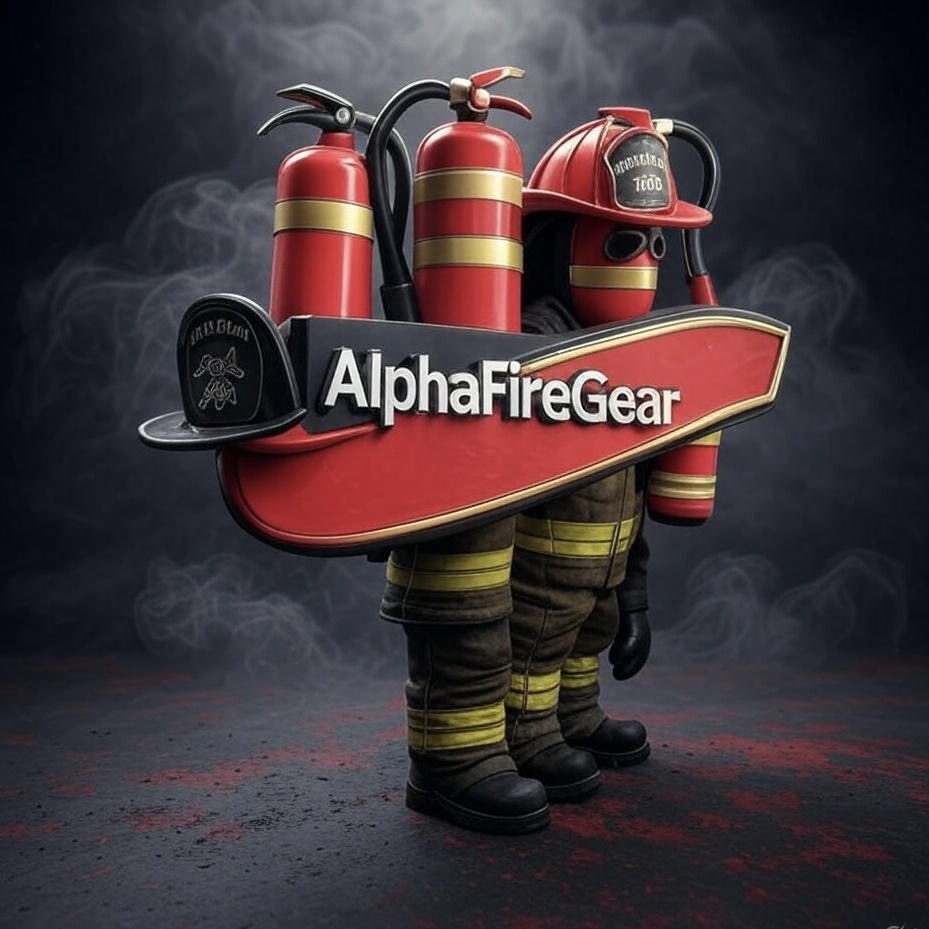
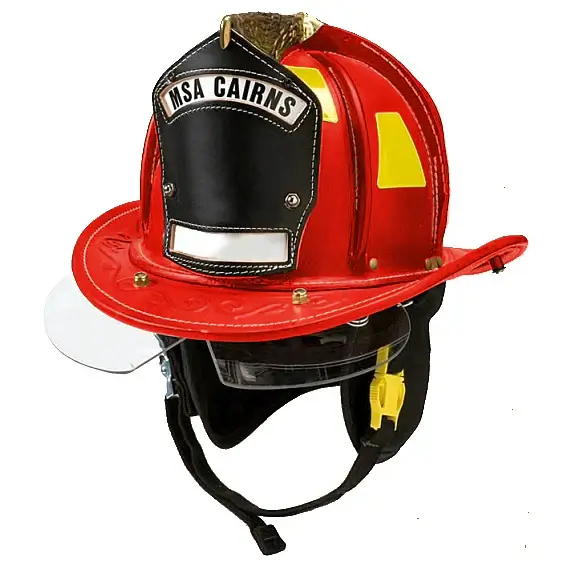
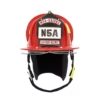
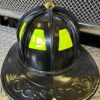
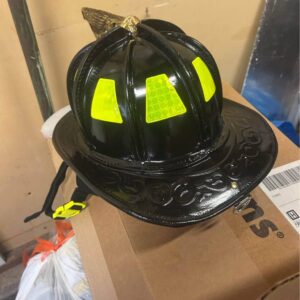
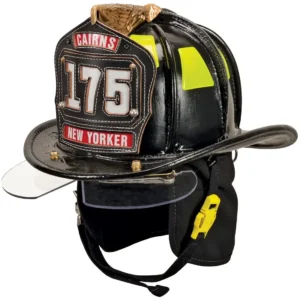

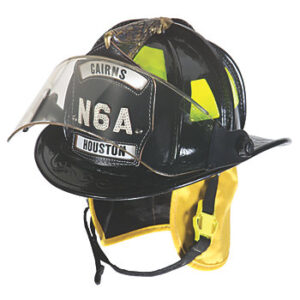
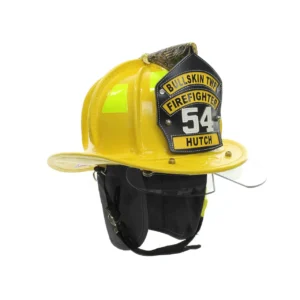
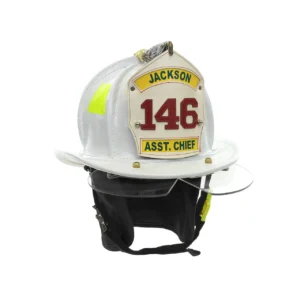
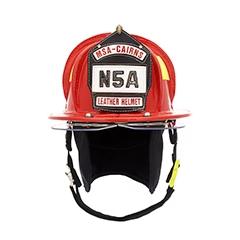

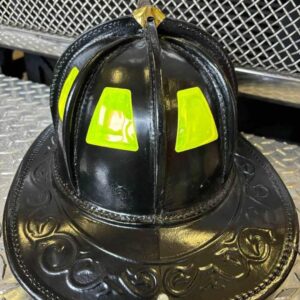

Reviews
There are no reviews yet.